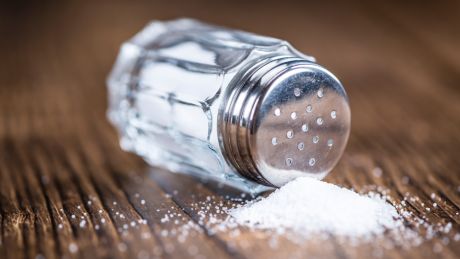How Much Salt Should You Eat A Day?
We’re all eating too much salt – here’s how to spot and reduce the sodium in your diet

Even if you never add salt to your food, you might well be eating too much of the stuff, especially if you tend to consume a lot of heavily processed foods and ready meals. Salt is thrown into pretty much everything, because it makes pretty much everything taste delicious, but that can have hazardous repercussion for your health.
We spoke to Dr Sarah Jarvis, advisor for low-sodium salt brand LoSalt, about how much you should eat in a day and how you can reduce the salt in your diet.
How much salt should you eat in a day?
Government findings show we are consuming an average of 8g a day, while the recommended daily amount is 6g, which is just one teaspoon a day.
What are the risks of eating too much salt?
Salt is the biggest source of sodium in our diet, and too much sodium increases our risk of stroke, heart failure, osteoporosis, stomach cancer and kidney disease. Excess sodium increases blood pressure, and hypertension – high blood pressure – is referred to as the silent killer because it usually has no symptoms, so you may not even know you have it. It affects approximately one in four adults in the UK regardless of your age.
Are there any particular foods that are higher in salt than perhaps people tend to realise?
Around 75% of the salt we eat is already in everyday foods such as bread, breakfast cereals and ready meals. Simple measures such as cutting down on processed foods, including the likes of ready-made sauces and soups, can help reduce your salt intake, as can keeping processed meats such as bacon, ham and sausages to a minimum.
See related
- Is Himalayan Pink Salt Good For You, Or Are Its Benefits Oversold?
- What Are Electrolytes And Why Do You Need Them
Is there any difference between standard table salt and things like Himalayan pink salt?
It’s important not to be duped into thinking posh gourmet sea and rock salts are better for you. All salt, whether it’s table salt, rock salt, sea salt or pink Himalayan salt, is 100% sodium chloride and it’s the sodium that is linked to high blood pressure. If you can’t go without salt, whether it’s for seasoning or cooking with, then you are better off using a reduced-sodium salt like LoSalt instead.
Are there risks to eating too little salt as well?
Very few people have too little salt in their diets. However, being extremely restrictive with your sodium has been linked to more insulin resistance, increasing the risk of type 2 diabetes, and possibly an unhealthy blood lipid profile.
Get the Coach Newsletter
Sign up for workout ideas, training advice, reviews of the latest gear and more.

Nick Harris-Fry is a journalist who has been covering health and fitness since 2015. Nick is an avid runner, covering 70-110km a week, which gives him ample opportunity to test a wide range of running shoes and running gear. He is also the chief tester for fitness trackers and running watches, treadmills and exercise bikes, and workout headphones.
